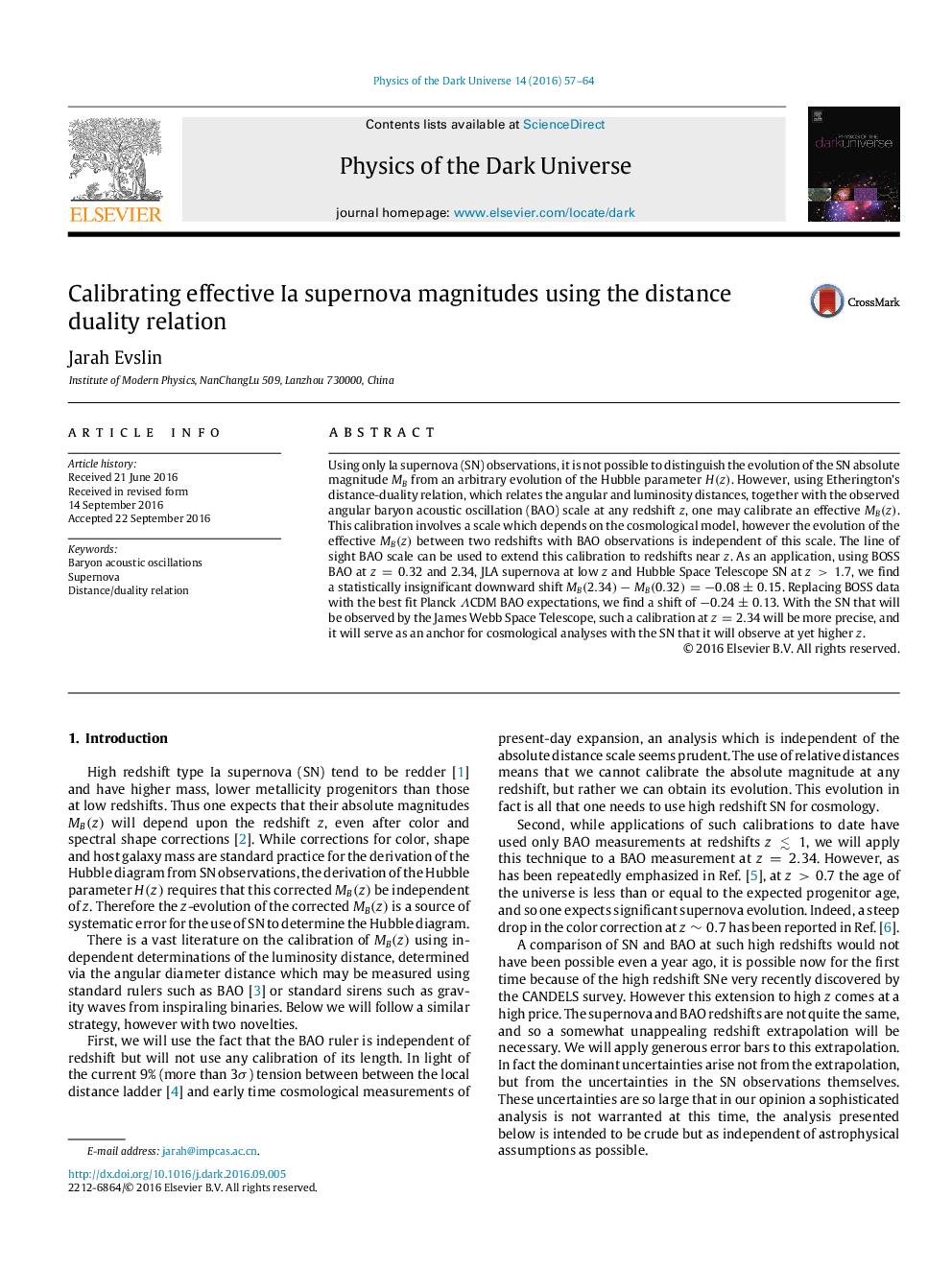| Article ID | Journal | Published Year | Pages | File Type |
|---|---|---|---|---|
| 8141893 | Physics of the Dark Universe | 2016 | 8 Pages |
Abstract
Using only Ia supernova (SN) observations, it is not possible to distinguish the evolution of the SN absolute magnitude MB from an arbitrary evolution of the Hubble parameter H(z). However, using Etherington's distance-duality relation, which relates the angular and luminosity distances, together with the observed angular baryon acoustic oscillation (BAO) scale at any redshift z, one may calibrate an effective MB(z). This calibration involves a scale which depends on the cosmological model, however the evolution of the effective MB(z) between two redshifts with BAO observations is independent of this scale. The line of sight BAO scale can be used to extend this calibration to redshifts near z. As an application, using BOSS BAO at z=0.32 and 2.34, JLA supernova at low z and Hubble Space Telescope SN at z>1.7, we find a statistically insignificant downward shift MB(2.34)âMB(0.32)=â0.08±0.15. Replacing BOSS data with the best fit Planck ÎCDM BAO expectations, we find a shift of â0.24±0.13. With the SN that will be observed by the James Webb Space Telescope, such a calibration at z=2.34 will be more precise, and it will serve as an anchor for cosmological analyses with the SN that it will observe at yet higher z.
Keywords
Related Topics
Physical Sciences and Engineering
Physics and Astronomy
Astronomy and Astrophysics
Authors
Jarah Evslin,
